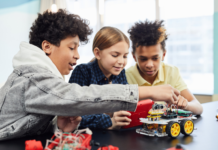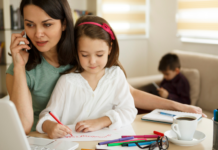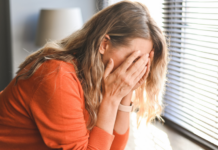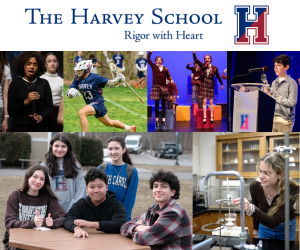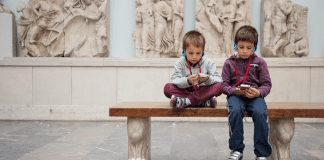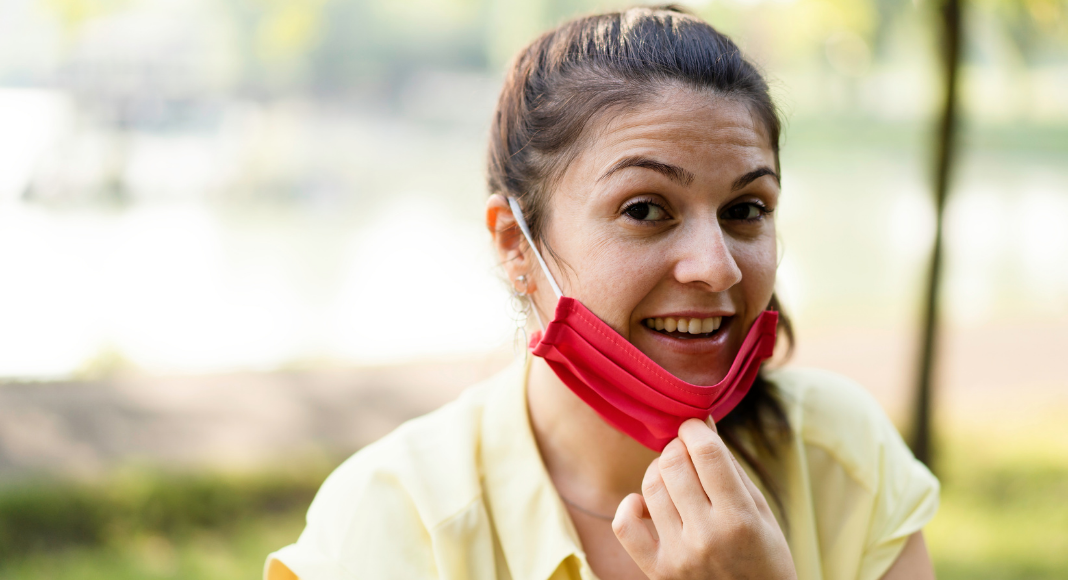 We stood there huddled next to the television, too nervous to sit as we listened to our governor speak.
We stood there huddled next to the television, too nervous to sit as we listened to our governor speak.
He was talking about the pandemic. The state’s numbers. How far we’ve come. Then he said the words we’d been waiting for. He was lifting the school mask mandate and allowing mask choice on February 28th.
My oldest turned to me for confirmation. I nodded. She screamed. And while much was still unknown – would our district allow it? Would a new variant change it? – I told myself to enjoy the moment. Soon my babies wouldn’t need masks. The day I’d dreamed of was almost here.
I didn’t start this pandemic as an “unmasker.” In fact, in August 2020, any worries about the mask were eclipsed not just by the understanding of their necessity but by the sheer joy that schools were reopening.
All my kids love school. So much so that when the school went remote, my oldest clung to her virtual learning like a life raft. She completed every assignment early and spent hours talking about her classroom and friends. My son, then in preschool, grieved by asking questions. Where were his friends? Where was his teacher? And why were the caterpillars from school living at her house? Would he get to see them when they became butterflies?
The answer was no. The butterflies flew off over Zoom. We took the last day of school pictures in front of empty buildings. And all of us dreamed of the day we could again walk through those doors.
So when our district announced its fall hybrid schedule, we were ecstatic. That first day, greeted by waving teachers and bright clusters of balloons, I was overcome with emotion. School was open. My kids were back where they belonged.
Except that day, my then seven-year-old daughter came home hysterical. Desks were oceans apart. Bookshelves were missing. She couldn’t talk to friends.
“It’s worse than virtual, Mommy,” she said.
The words stung, but still, I was optimistic.
“I know it’s an adjustment, but it’ll get better soon. I promise,” I said.
Ever since, that promise has haunted me.
Moms are supposed to make things better. We place band-aids on skinned knees and heal problems with hugs. But this wasn’t a scrape but a full-blown global pandemic. How could I make it better?
Faced with this reality, I told the kids they were lucky to be in school. I asked them to tell me one happy moment from each day. And took them out for lots of ice cream.
Still, my daughter cried. Big, hot messy tears right outside her classroom. Every single day until winter break.
She became paralyzed with fear of dropping her pencil because she wasn’t allowed to pick it up if she dropped one. One day a boy dropped his whole bucket of pencils and couldn’t finish a writing assignment. After this, her fear grew to panic. As did her distress with the policy that she look straight ahead at all times. She used to dream about looking out the window. About lowering her mask to drink water.
Seeing my daughter so upset was terrifying. Too young to understand or rationalize her new environment, she became anxious. Angry. Upset.
Down the street, preschool wasn’t going much better. My son’s sensitive gag reflex meant he needed to change masks constantly or risk throwing up when it got “too smelly.” Thankfully, his program was only a few hours long. But all year, I worried. Would he be okay in kindergarten? How long could my oldest handle this stress? And seeing their struggles, could I really mask my two-year-old that fall?
As the concerns grew, my husband and I did what any parents would do. We researched. Learned. Problem-solved. We looked at studies on transmission in schools. Read about mitigation strategies in other countries. Much of Europe, including the UK, wasn’t masking young children. Mask and mitigation policies varied across states. Was one policy better? Safer? More effective? Less?
We analyzed the available data. Then we emailed. Teachers. The principal. The superintendent. State reps. Local reps. The health department. Anyone who would listen.
“We see there are other ways. Has anyone considered more outdoor time? Open windows? Outdoor gym classes? What about tents? Something? Anything? Kids are hurting! We need to get creative! They’re counting on us!”
But nothing changed. And worried about the judgment that would follow by confessing our struggles to friends, we grew quiet.
Months passed. Winter came. We saw fewer friends. We bought more masks. Then vaccines came out, and we jumped in line, the big “Crush Covid” sign at the entrance a giant blue wall of hope.
“This is it,” I told my kids. “The adults will be protected, and the virus will run out of people to infect. It’s going to end. I can feel it!”
Rates fell. Restrictions relaxed. We all cheered.
Then came Delta and another fall season in masks. This time my son cried. Luckily, only for a few weeks. Until one day, the smell of his mask was too strong. And he threw up.
The nurse handed me a bag with his soiled mask stuffed inside when I picked him up.
“He was wearing this when it happened?” I asked.
She nodded.
I sent more emails.
This time I begged. “Please! My kids are struggling. We’re a year and a half in. We have treatments and vaccines! Unmasked adults are filling restaurants and stadiums! Can’t we do something? When can we have mask choice?”
No one had an answer.
But this time, my son’s teacher emerged as a beacon of light. She moved his desk near a friend’s. Talked to him about his fears. Helped him adjust. Her simple acts of kindness gave us all hope.
Yet still, my kids struggled. And still, I pushed for change. Through Omicron. 10-day preschool quarantines. New snack restrictions. Winter mask breaks without coats. And so many COVID tests my kids regularly had bloody noses.
Then came the announcement. Mask choice. February 28th. Our finish line was here.
COVID has affected us all differently. Some kids haven’t minded masks. Others have struggled much more than mine. Our unique experiences and backgrounds have given us different perspectives on acceptable risk levels and mitigation strategies. Different definitions for burden and duty.













